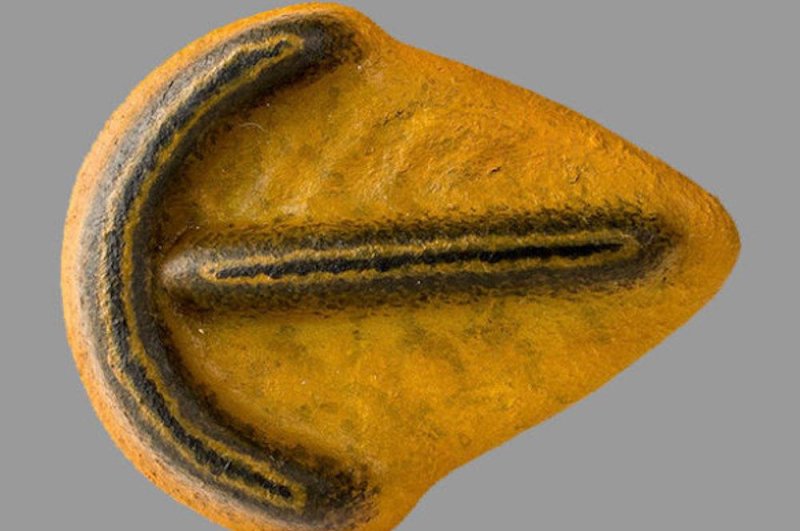New research suggests the ridges on the back of Precambrian species Parvancorina allowed it to orient itself to face the current and direct current across its body for suspension feeding. Photo by Matteo De Stefano/MUSE/Wikimedia Commons
May 19 (UPI) -- The Garden of the Ediacaran was livelier than previously thought, study suggests. Researchers believe several Precambrian species used currents to move and eat.
Until recently, scientists believed most of the soft-bodied creatures populating the shallow seas of the Garden of the Ediacaran, 635 to 540 million years ago, were stationary. But a breakthrough analysis of Precambrian fossils suggests otherwise.
During the Ediacaran Period, much of the world consisted of shallow seas. Because the organisms that populated this unique environment were without the ability to forge shells or bones, fossil evidence is limited and difficult to interpret.
Fossil analysis has yielded little to no evidence of movement or complex behavior. Researchers assumed the period's soft-bodied species spent the entirety of their lives in a single spot on the seabed.
But new analysis of a tiny, arrowhead-shaped organism, Parvancorina, suggests some creatures were able to utilize the seas' currents.
Parvancorina is marked by ridges on its back. The ridges form an anchor-like shape. Researchers suggest the ridge pattern allowed the creature to orient itself to face the current -- an ability known as rheotaxis.
"Our analysis shows that the amount of drag produced with the current flowing from front to back is substantially less than that flowing from side to side," study leader Simon Darroch, assistant professor of earth and environmental sciences at Vanderbilt University, said in a news release. "In the strong currents characteristic of shallow ocean environments, that means Parvancorina would have benefited greatly from adjusting its position to face the direction of the flow."
Researchers used an analysis technique called computational fluid dynamics to show how Parvancorina's ridges would interact with flowing water. The results of their analysis -- detailed in the journal Biology Letters -- shows the ridges direct water flow to specific points on the organism's body.
"This would be very beneficial to Parvancorina if it was a suspension feeder as we suspect because it would have concentrated the suspended organic material making it easier to consume," Darroch said.
In 2015, Darroch and his colleagues used computational fluid dynamics to analyze the circular ridges on the back of another Ediacaran organism, Tribrachidium heraldicum.
Scientists have long struggled to organize and place the soft-bodied species of the Garden of the Ediacaran on the tree of life. For now, researchers have moved on from such a challenge and focused on recreating an ancient ecosystem.
"We wanted to understand how their weird architectures affected how they ate, reproduced and moved," Darroch said. "Because they lived in a shallow sea environment, strong currents must have played a major role in their evolution. So computational fluid dynamics is the perfect tool for addressing this question."
Researchers plan to continue using computational fluid dynamics to study the Ediacaran creatures. Slowly, scientists hope to populate a digital world of dynamic soft-bodied creatures.
"The fact that we have now established that one Ediacaran species could move around suggests that our picture of this period may be fundamentally wrong," said Darroch. "There may have been a lot more movement going on than we thought and we intend to apply this technique to other Ediacaran fossils to determine if that was the case."















